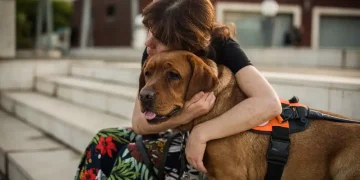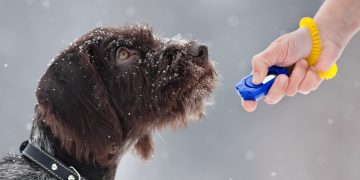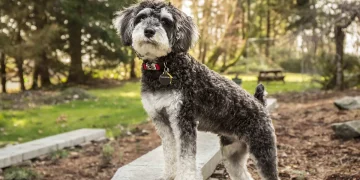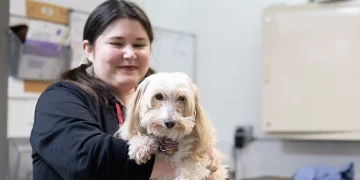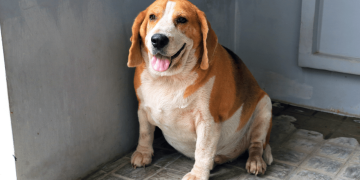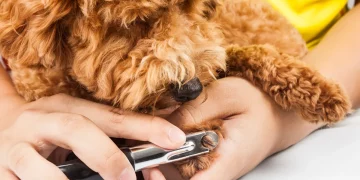Some dogs are extremely afraid of strangers. They wince, tremble, and try to avoid any strangers they come across. While it’s not unheard of for dogs to be afraid of strangers, the ideal response is open friendliness rather than hiding or running away. If your dog is overly fearful in front of strangers, it’s a good idea to understand why so you can help him get rid of his fear. Your dog may be afraid of people he doesn’t know for several reasons.
- One possibility is its genetics. Shy or timid dogs are more likely to produce timid offspring. A dog with a general fear of all strangers—rather than a specific fear of men or children—may be genetically predisposed to fear.
- Lack of proper socialization as a puppy is another reason some dogs are afraid of strangers. Puppies who don’t have the opportunity to meet a variety of people are more likely to develop fear of people they don’t know.
- Dogs with a history of abuse may also be afraid of strangers. If you know the history of abuse, you can better understand why your dog is afraid of strangers. Fear Alleviation A dog’s fear of strangers should be managed very carefully. All dogs react differently when they are scared. A dog might huddle in a corner in front of strangers. The other dog may respond by growling or biting. Teaching a dog not to be afraid usually takes a lot of time and constant training. When you and your dog meet new people, try to be friendly, relaxed, and optimistic.
Some dogs will never learn to fully accept strangers, but you may be able to alleviate your dog’s fear to some extent. If it doesn’t want a pet, don’t force your scared dog to meet people or accept pets, as this can sometimes lead to fear of biting. Based on your dog’s responses, it is very helpful to work with a certified dog behaviorist to help identify cues and management strategies to practice. Each dog learns and adjusts at its own pace. This process can take weeks, months or even longer. Prepare for new visitors Whenever a new person comes to visit, have that person ignore the dog completely. Visitors should not attempt to pet or make eye contact with the dog. Prepare some treats for your visitors to gently throw on the floor near your dog during the visit. With consistent application, your frightened dog may slowly begin to associate strangers with rewards. Some dogs are more afraid of men than women. If you notice your dog getting nervous, whining, or growling around strangers of a specific gender, you can prepare your guests accordingly. Let your dog approach strangers on his own terms. Depending on the severity of your dog’s fear, it may quickly warm up to strangers and allow petting and handling, or it may take multiple visits to warm up to new people.

Some very aggressive dogs may need to go to the comfort of the home away from visitors, where they can rest and not rush when visitors arrive. If you notice your dog growling or any form of aggressive behavior, it’s important to work with a certified dog behaviorist to help figure out the triggers and whether your pet is safe to act with visitors. You never want to put a visitor or your dog in a situation where someone could be bitten. Once your dog is near, the person should continue to avoid eye contact and make slow, non-threatening movements. Never force your dog to be handled by strangers, especially children. If a dog is pushed too far from its comfort zone and is not allowed to escape, it may resort to biting. Since dogs who are afraid of strangers may bite because of their fear, it’s your job to make sure everyone stays safe around your dog. This could mean keeping your dog in a different room when certain people are visiting. Stay stress-free and give your dog a space of his own. If you have a place, such as a quiet room, it will help the dog know that it will be alone. The crate is the perfect place for your dog to escape when he is too anxious.
Wearing a thunderbolt shirt or spraying a calming puppy pheromone in a safe area may also help. If your pet is in a safe place, don’t let people go in and pull it out, or even try to pet it, because the dog must have a place where it can be left alone and undisturbed. It’s perfectly acceptable to remove your dog from a potentially scary situation, especially if it helps keep visitors and your dog safe. A safe place for dogs doesn’t need a lot of space; a corner of a cozy, quiet room where your dog can curl up with his favorite toy or blanket will do just fine. Make sure no one enters the area without checking first; the dog must feel safe that it won’t be disturbed or surprised.




